Are you up to date with the latest cosmetic regulations FDA has set for 2023? It’s essential for any player in the beauty industry to be well-informed and compliant.
Having traversed the intricate landscape of the FDA’s guidelines for years, we’re here to distill the crucial information for you. Trust in our expertise to guide you through.
The FDA cosmetic regulations represents a set of standards and guidelines crafted by the Food and Drug Administration to ensure that cosmetic products are safe for consumer use and transparently labeled.
In this guide, we’ll explore key regulatory updates for 2023, delve into the specifics of compliance, and offer tips to ensure your brand remains on the right side of these crucial standards.
Keep reading, as we navigate the dynamic world of FDA cosmetic regulations.
1. Basics of FDA’s Role in Cosmetic Regulations
The Food and Drug Administration (FDA) is responsible for ensuring the safety and accurate labeling of cosmetic products in the U.S. The FDA does not require pre-market approval for cosmetics, which means that it’s up to the manufacturers to guarantee their products are safe for consumer use.
However, the FDA will intervene if a cosmetic product is found to be harmful or misbranded, making it essential for brands to thoroughly test and appropriately label their offerings. This regulatory approach emphasizes the importance of proactive compliance by manufacturers, ensuring the well-being of the consumer.
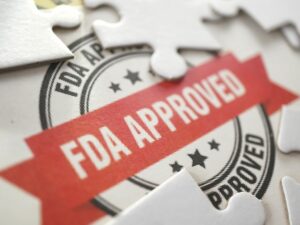
2. Types of Cosmetics Governed by the FDA
When looking at the FDA’s oversight in the cosmetic sector, it becomes clear that a wide variety of product categories come under its regulations. Here’s a deeper look at some of these categories:
- Facial Cosmetics: Products in this category, such as foundations, blushes, and concealers, are designed to enhance or modify the appearance of the face. For clarity, a foundation that offers sun protection benefits would need to be compliant with FDA’s guidelines pertaining to those specific claims.
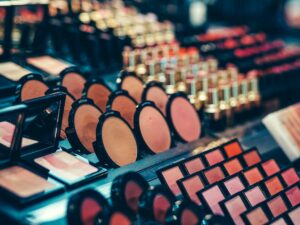
- Hair Care Products: This category includes products like shampoos, conditioners, hair sprays, and dyes. Each of these is formulated to either clean, condition, color, or style hair and thus must meet the FDA’s safety and labeling standards.
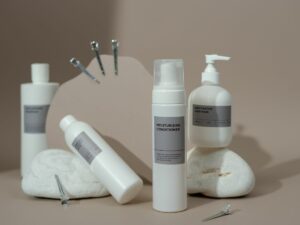
- Skin Care Products: Under this category, you’ll find products typically used in daily skincare routines. This encompasses lotions, moisturizers, toners, and serums, all of which should be formulated considering the safety guidelines.
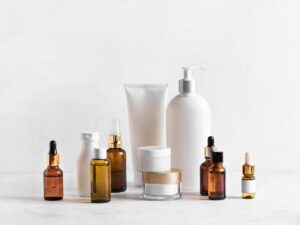
For brands operating in the cosmetic sector, a thorough understanding of these categories and the associated regulations is crucial. It ensures that the products they bring to market are not only of high quality but also compliant with the necessary standards, fostering trust with the consumers and stakeholders alike.
3. Key Elements of FDA Regulations for Cosmetics
To ensure consumer safety and trust, the FDA has laid out a comprehensive set of regulations for cosmetics. Let’s delve into some of the key components that brands need to adhere to when navigating the cosmetic landscape.
Labeling Requirements
Proper labeling is important in the cosmetics industry. The FDA requires that all cosmetics sold in the U.S. have labels that are truthful and not misleading. This not only includes the correct naming of the product but also an accurate list of ingredients, warning statements, and directions for use.
Moreover, brands are required to use the common or usual name of ingredients. The only exception is color additives, which can be listed by their approved name. If a product contains water, the ingredient label should list it as ‘Water’ or ‘Aqua’. This ensures transparency and consistency for consumers who rely on labels for information.
Ingredient Safety
Safety first is a guiding principle for the FDA when it comes to cosmetics. Every ingredient used in a cosmetic product should be safe for consumer use under labeled or customary conditions. Brands are required to conduct thorough safety assessments of their products and the ingredients they contain. This is a principle that esteemed manufacturers, including Nako Cosmetics, adhere to diligently.
While the FDA does not have a formal approval process for cosmetic ingredients, it does monitor and can act against cosmetic products that contain harmful substances. Any harmful reaction experienced by consumers can be reported, leading to potential investigation by the FDA. This puts the onus on brands to be meticulous about ingredient safety to avoid potential repercussions.
Claims and Advertising
According to Covalo Blog, it’s essential for brands to be cautious and truthful when making claims about their cosmetic products. The FDA scrutinizes claims to ensure they’re not misleading and that they’re supported by substantial evidence. For instance, a product claiming to provide “SPF protection” must substantiate this with appropriate testing.
Additionally, if a product claims benefits that go beyond cosmetic purposes, like altering the structure or function of the skin, it might be classified as a drug, subjecting it to more rigorous regulations. Brands must, therefore, strike a balance between marketing their products effectively and ensuring that they don’t make exaggerated or unsupported claims.
Manufacturing Practices

The quality and safety of a cosmetic product are significantly influenced by the manufacturing processes employed. While the FDA doesn’t have specific regulations for cosmetic manufacturing practices, it does provide guidelines. These guidelines emphasize maintaining a clean, hygienic production environment and having quality control processes in place.
Ensuring that cosmetics are free from contaminants and are produced in a consistent manner is vital. Manufacturers should regularly review and update their processes, considering the latest scientific and production knowledge, ensuring that the end product is of the highest quality and safety standards.
4. The Regulatory Process: A Step-By-Step Guide
Gaining FDA approval is a paramount step for any cosmetics brand wishing to establish credibility and trustworthiness in the market. Let’s walk through the step-by-step process of securing this crucial approval:
Step#1 Pre-Approval Research and Development
Before even approaching the FDA, companies must invest significantly in research and development. This entails rigorous testing, both in-house and often through third-party laboratories, to ensure product safety and efficacy.
Take, for instance, Nako Cosmetics. Before launching a new facial cream, they might spend months, if not years, in the R&D phase, identifying the right blend of ingredients and conducting preliminary safety tests. This diligence is the first step in a long journey towards securing FDA approval and showcases a brand’s commitment to quality and safety.
Step#2 Compilation of Necessary Documentation
Once the product has undergone extensive testing, brands must compile a comprehensive dossier of all relevant documentation. This encompasses ingredient lists, safety assessments, clinical trial results, and any other pertinent data.
The documentation serves as a record of the brand’s commitment to safety and will be closely scrutinized by the FDA. Ensuring transparency and accuracy in this stage is paramount, as any inconsistencies can lead to delays or even denials in the approval process.
Step#3 Submission to the FDA
With the documentation ready, brands can then formally submit their products for review by the FDA. This involves filling out specific forms and providing all the accumulated data for the agency’s examination.
During this phase, the FDA conducts a thorough review of all provided materials, ensuring that the product adheres to the set standards and guidelines. This can be a lengthy process, and patience is key. Brands should be prepared to address any queries or concerns raised by the FDA during this phase.
Step#4 Addressing Feedback and Gaining Approval
Post-review, the FDA might have feedback, queries, or concerns that the brand needs to address. This could involve additional tests, clarification on certain data points, or even reformulation in some cases.
Once all FDA concerns are adequately addressed, and the product meets their stringent criteria, approval is granted. It’s a moment of validation for brands, signaling that their product is safe for consumer use and meets the highest standards set by the regulatory body.
5. Common Misconceptions About FDA Cosmetic Regulations
FDA cosmetic regulations is vast and complex, leading to several misunderstandings and misconceptions. Let’s address some of the most common myths to help brands navigate the regulatory landscape more confidently.

Pre-Market Approval Required
The FDA does not require cosmetics to undergo pre-market approval. However, it’s the manufacturer’s responsibility to ensure the product is safe for consumer use. An example that highlights this misconception is the belief that a product on the shelf has been individually approved by the FDA, which is not the case.
Natural Equals Safe
According to Everyday Health, just because an ingredient is labeled “natural” doesn’t mean it’s automatically deemed safe. All ingredients, whether synthetic or natural, must be evaluated for safety in cosmetic formulations.
No Regulation on Small Manufacturers
Some believe that smaller cosmetic businesses or handmade cosmetics are exempt from FDA regulations. This is false; all cosmetic products, regardless of the size of the business, fall under FDA guidelines.
FDA-Approved Claims
The FDA does not verify or endorse the claims made on cosmetic products. Brands are responsible for ensuring the truthfulness and validity of their claims, without misleading the consumer.
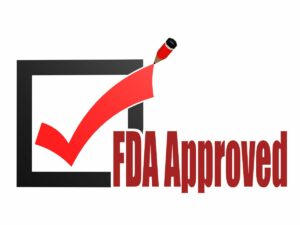
Misconceptions can lead to unintentional missteps in the cosmetic industry. Therefore, understanding the nuances of FDA regulations and dispelling myths is crucial for brands to ensure they remain compliant and maintain their reputation in the market.
6. 4 Compliance Tips for Manufacturers and Sellers
Ensuring compliance with FDA regulations is paramount for anyone involved in the cosmetics industry. Here’s a comprehensive breakdown of crucial compliance tips for manufacturers and sellers.
#1 Stay Informed
Regulations and guidelines are not static; they evolve with new scientific discoveries and societal needs. Manufacturers and sellers should make it a routine to check for updates on the FDA’s official website. Engaging with regulatory professionals can also offer insights and assistance in navigating the complexities of the industry.

#2 Documentation is Key
In the cosmetics industry, maintaining detailed records is non-negotiable. This includes documentation related to product formulations, safety tests, ingredient sourcing, and more. Having a well-organized and comprehensive documentation system in place not only helps streamline potential FDA inquiries but also facilitates internal quality checks.

When every step of the production and distribution process is recorded, addressing concerns or identifying areas for improvement becomes considerably more manageable.
#3 Prioritize Safety
Ensuring consumer safety is a foundational tenet for any brand in the cosmetics industry, and manufacturers like Nako Cosmetics exemplify this commitment. Rigorous testing and comprehensive safety assessments are prerequisites before any product graces the market shelves.

A brand’s standing is inextricably linked to the trust consumers bestow upon its products. For respected names in the industry, emphasizing safety isn’t just a regulatory necessity, it’s central to their enduring success and reputation in the beauty world.
#4 Transparency in Labeling
Misleading or ambiguous labels can quickly erode trust and lead to regulatory issues. It’s imperative for brands to ensure their labels are clear, truthful, and in compliance with FDA guidelines. This involves avoiding exaggerated claims, always listing ingredients in the order of their predominance, and providing any necessary disclaimers or instructions.

The more transparent a brand is about its products, the more likely it is to cultivate trust and loyalty among its consumers.
7. 2023 Updates on FDA Cosmetic Regulations
As we navigate through 2023, the FDA continues to refine its guidelines to accommodate new scientific data, evolving consumer needs, and industry advancements. Let’s dive into the significant updates:
Enhanced Ingredient Transparency
In 2023, one of the most notable shifts has been the FDA’s push for enhanced ingredient transparency. The agency now mandates that all cosmetic products display a comprehensive list of ingredients on their official websites, ensuring consumers have easy access to this vital information even before making a purchase.
For instance, a brand releasing a new facial serum must now detail each ingredient on its online product page, alongside the traditional label on the product packaging. This push for digital transparency caters to the growing number of online shoppers and ensures that potential allergens or irritants are easily identified.
Stricter Regulations on “Clean Beauty” Claims
The term “clean beauty” has gained immense traction in recent years. Recognizing its impact, the FDA has rolled out stricter regulations surrounding its usage. Brands can no longer label their products as “clean” without adhering to a specific set of criteria defined by the FDA.
This move aims to standardize the term’s usage and eliminate misleading marketing practices. Cosmetics that fail to meet the established “clean” criteria risk facing penalties, ensuring that consumers are not misled by ambiguous or exaggerated claims.
Introduction of the Sustainable Packaging Guidelines
Sustainability is no longer just a trend but a necessity. Acknowledging this, the FDA introduced guidelines in 2023 focusing on sustainable packaging for cosmetic products. These guidelines encourage brands to adopt eco-friendly packaging solutions and offer incentives for those that lead the charge in sustainability.
A brand choosing to shift from single-use plastic containers to biodegradable or refillable packaging options might receive certain regulatory benefits or recognitions. This initiative underscores the FDA’s commitment to promoting eco-conscious practices within the cosmetics industry.
| Aspect |
Details |
Additional Information |
| Organizational Changes |
FDA announced a move of cosmetics regulation from the Center for Food Safety and Applied Nutrition (CFSAN) to the Office of the Chief Scientist (OCS). |
This move is part of a broader initiative to reorganize food safety regulation and oversight. |
| Current Regulation |
FDA does not preapprove cosmetics, except for color additives. There are no mandates for good manufacturing practices, facility registration, or product listing. |
Cosmetic companies are responsible for ensuring their products are safe and properly labeled. |
| New Provisions |
– FDA can recall a product if it poses a health risk.
– FDA will issue manufacturing regulations for cosmetics.
– Manufacturing facilities must register with FDA.
– All cosmetic products must be listed and submitted to FDA. |
These changes were enacted in December 2022 as part of an omnibus appropriations bill. |
| Additional Provisions |
– FDA will establish standardized testing methods for detecting asbestos in cosmetics containing talc.
– FDA will assess the use of perfluoroalkyl and polyfluoroalkyl substances (PFAS) in cosmetic products. |
These provisions represent the first changes in cosmetics regulation since the 1930s. |
Dive Deeper Into Our Resources
For some insightful reads, we’ve curated a list of recommended articles just for you:
Still haven’t found what you’re looking for? Don’t hesitate to contact us. We’re available around the clock to assist you.
Conclusion
In the ever-evolving cosmetic industry, staying compliant and updated with FDA regulations is not just a necessity, but a responsibility. By understanding and adhering to these guidelines, brands can ensure they’re delivering safe, high-quality products to their consumers.
Considering a partnership to manufacture top-notch cosmetic products? Choose Nako Cosmetics, a trusted name in the cosmetic manufacturing sector. Our dedication to quality and compliance is unmatched. Contact us today to learn more.











